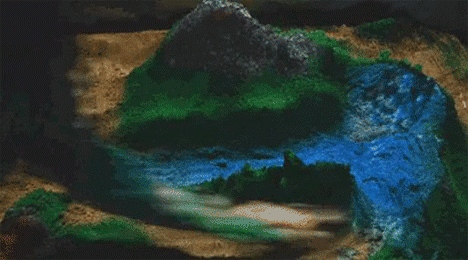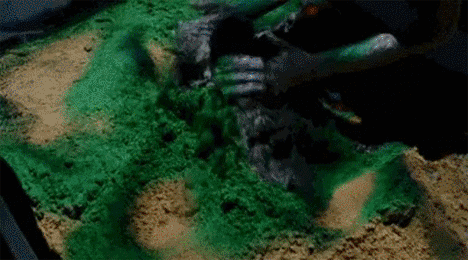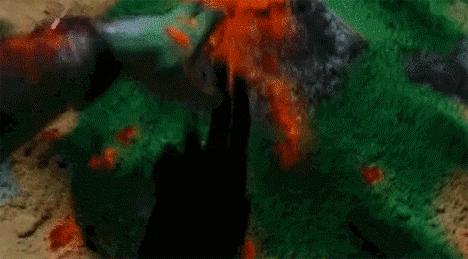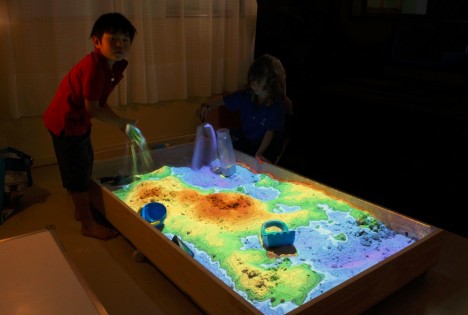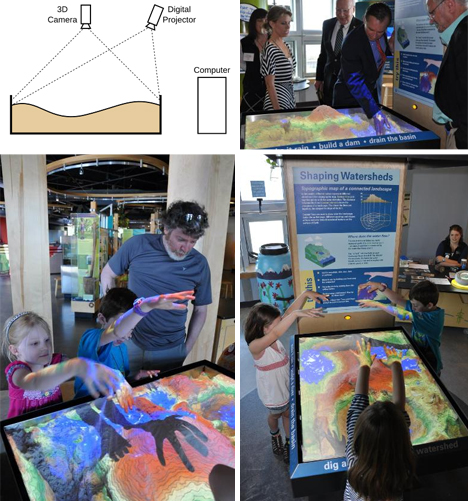Simulating an amazing array of natural environments and phenomena, this dynamic playspace turns ordinary hand-sculpted sand into vividly colorful landscapes in the blink of an eye.
A real and working augmented reality sandbox, the system is designed to help educate students about earth sciences with a uniquely responsive and intuitive interface.
A team of data visualization and earth sciences experts, mainly from the University of California, created the setup using a Microsoft Kinect camera coupled with topographic visualization software and a 3D data projector.
From rough prototypes to its present state, the project has come a long way in terms of the level of rendering detail and response speed.
Tapping into a familiar form of childhood play, the project “allows users to create topography models by shaping real sand, which is then augmented in real time by an elevation color map, topographic contour lines, and simulated water. The system teaches geographic, geologic, and hydrologic concepts such as how to read a topography map, the meaning of contour lines, watersheds, catchment areas, levees [and more].”
Of course, one can imagine an array of applications of this technology beyond classrooms and science museums, from Minecraft-style, construction-centric games to simulators and modeling tools for landscape architects and urban designers.
More about this amazing project: “UC Davis’ W.M. Keck Center for Active Visualization in the Earth Sciences (KeckCAVES), together with the UC Davis Tahoe Environmental Research Center, Lawrence Hall of Science, and ECHO Lake Aquarium and Science Center, is involved in an NSF-funded project on informal science education for freshwater lake and watershed science. The sandbox hardware was built by project specialist Peter Gold of the UC Davis Department of Geology. The driving software is based on the Vrui VR development toolkit and the Kinect 3D video processing framework, and is available for download under the GNU General Public License.”
